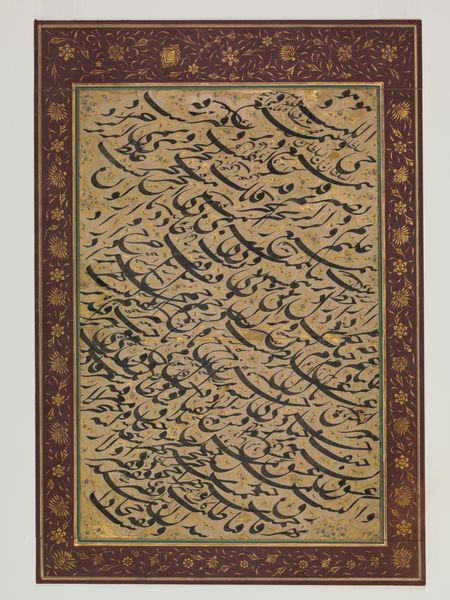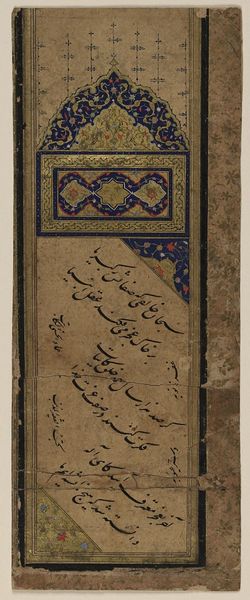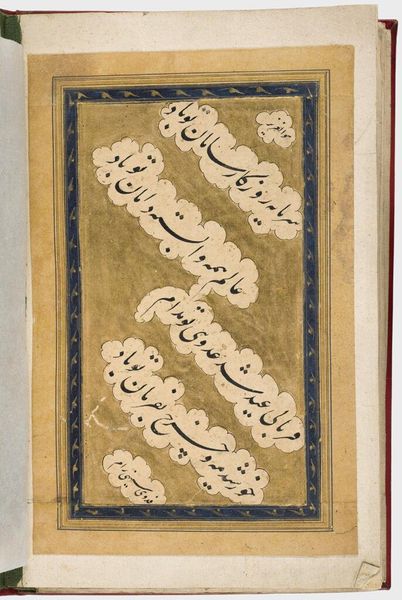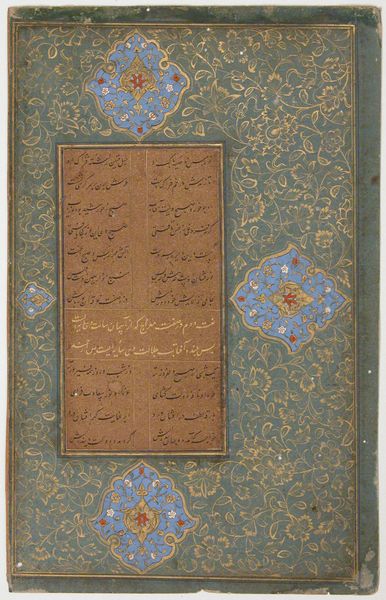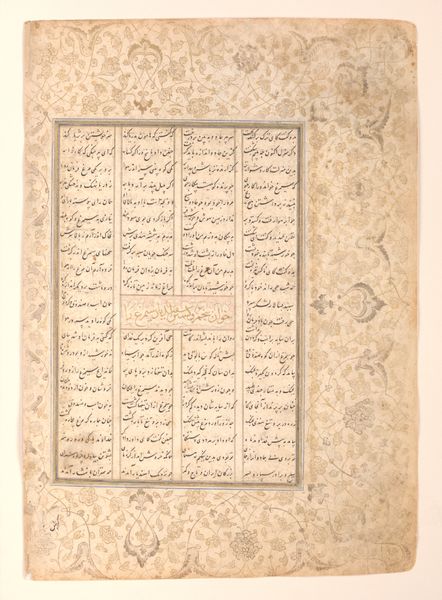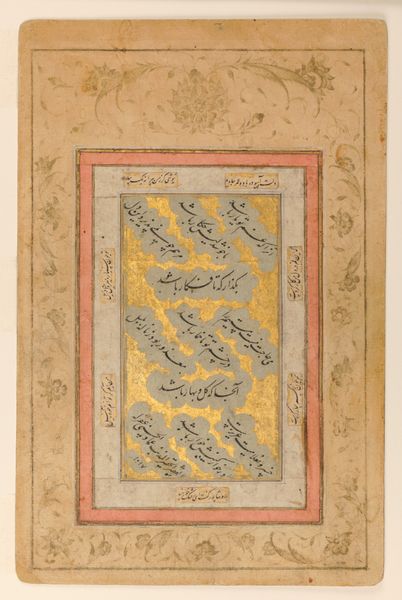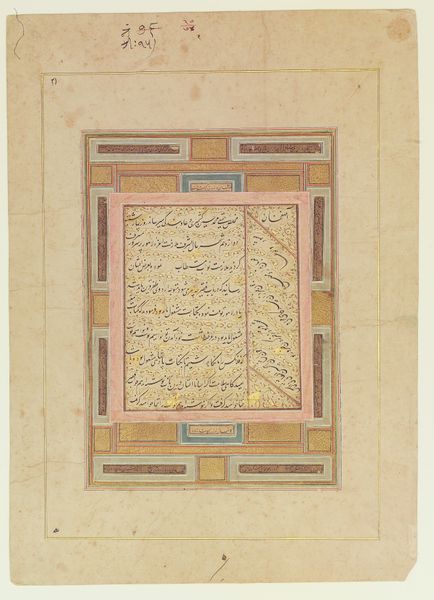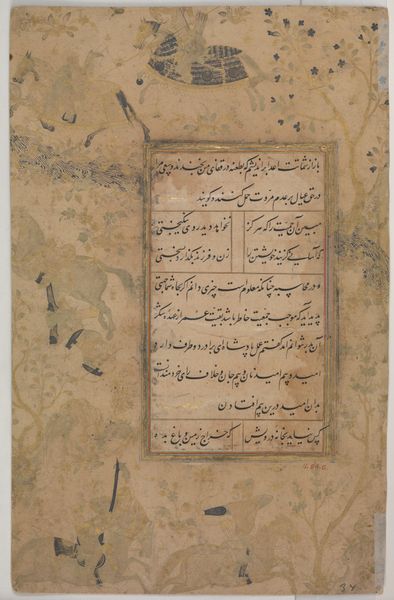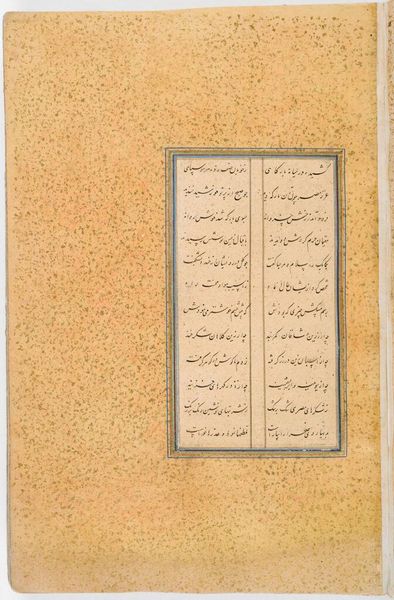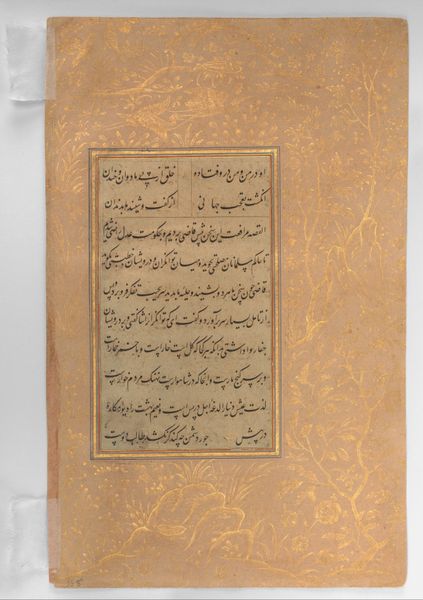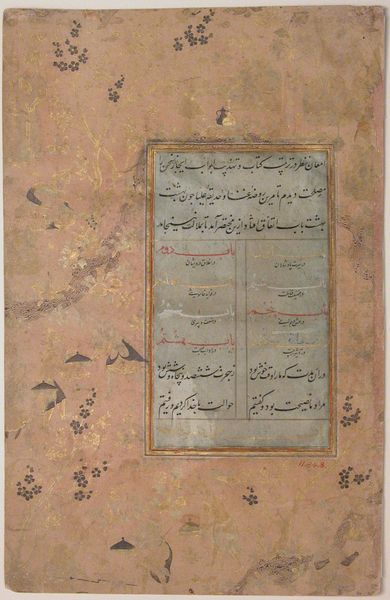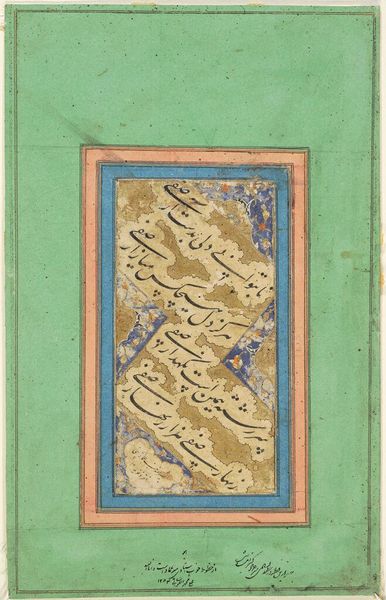
drawing, ink
#
drawing
#
ink
#
geometric
#
islamic-art
#
miniature
#
calligraphy
Dimensions: Illumination: H. 8 7/16 in. (21.4 cm) W. 4 in. (10.2 cm) Page: H. 8 7/16 in. (21.4 cm) W. 4 in. (10.2 cm) Mat: H. 19 1/4 in. (48.9 cm) W. 14 1/4 in. (36.2 cm) D. 1/4 in. (0.6 cm) Frame: H. 21 3/4 in. (55.2 cm) W. 16 3/4 in. (42.5 cm) D. 3/4 in. (1.9 cm)
Copyright: Public Domain
Editor: We're looking at a "Page of Calligraphy" created between 1575 and 1599 by Muhammad Husayn al-Katib. It's ink and drawing on paper. I’m really struck by the balance between the flowing script and the delicate birds scattered throughout. It feels both formal and whimsical. How do you approach something like this from a formalist perspective? Curator: The initial reaction is to perceive the interplay between line, form and ground. Note how the calligraphic text operates not only as linguistic communication but as a series of carefully structured abstract marks. Consider, too, the contrast in texture between the precise geometry of the overall page layout and the organic forms of the birds interspersed within the textual field. The birds animate the work, fracturing the strict vertical and horizontal elements. Editor: So, you see the tension between the geometric and the organic as a key element? Curator: Precisely. The contrast generates visual interest. Are the birds merely decorative? Or do they suggest a dialogue between the textual content and a more natural, even representational, realm? Think also about how the *size* and *placement* of these figures relative to the dominant lettering guides your eye, directing movement and rhythm across the whole visual plane. What does their placement suggest to you? Editor: That's interesting. I hadn't thought about them directing my eye. I was more focused on them breaking up the script, adding moments of pause in what otherwise looks like dense blocks of text. It's a clever balance. Curator: Exactly. It's through this precise formal arrangement that meaning is generated, whether symbolic, emotive, or simply aesthetic. Analyzing that arrangement opens doors. Editor: I see. So by paying attention to the materials, composition, and placement of elements we find value within this art. Thank you for enlightening me on a different way to understand and perceive artwork!
Comments
No comments
Be the first to comment and join the conversation on the ultimate creative platform.
